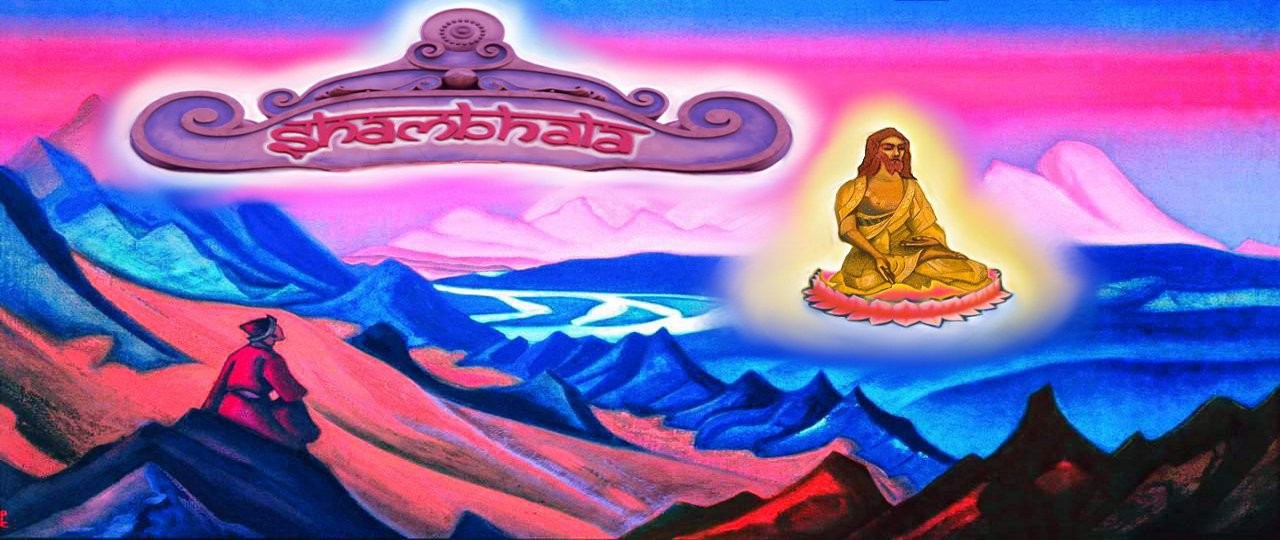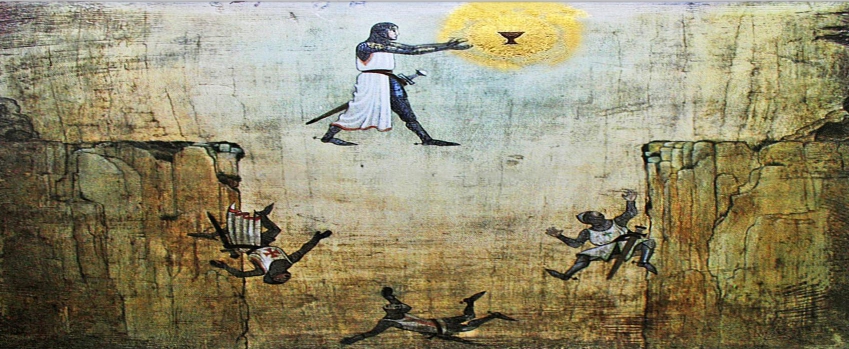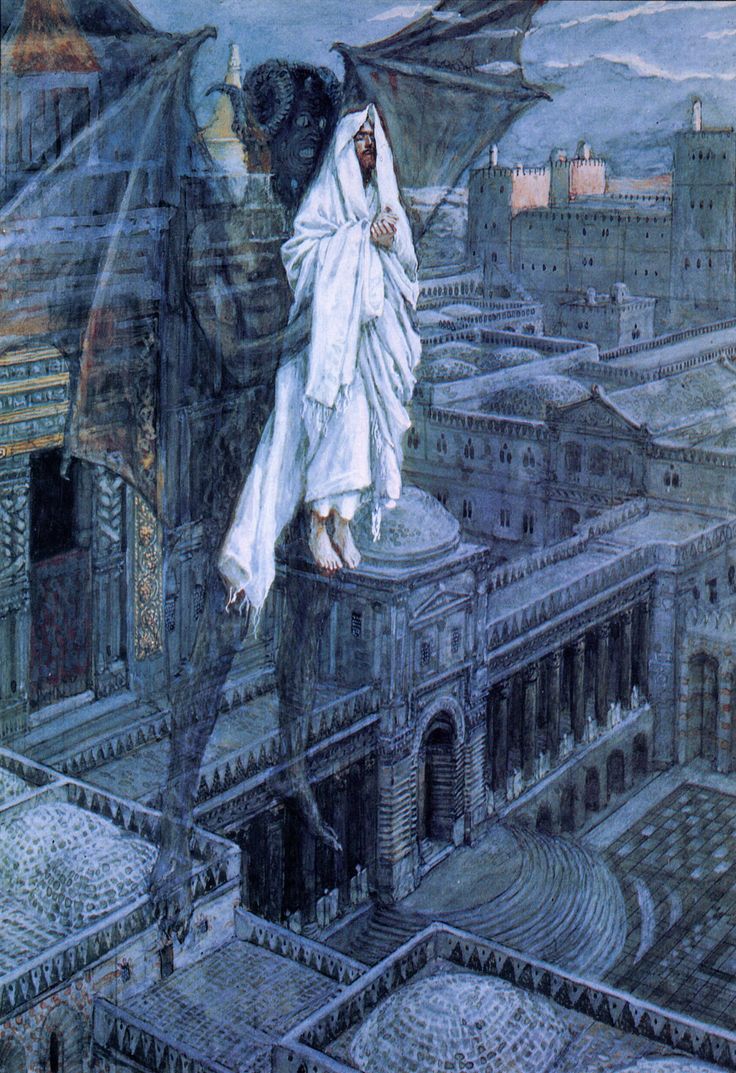According to Rosicrucian initiate, Rudolf Steiner (1861-1925), there are seven “inexpressible” or “unutterable” mysteries of life which previously have never been spoken of outside the ranks of the hidden, esoteric brotherhoods. It is only in our age that it has become possible to speak of them openly. One of these is the “Mystery of the Abyss.”
In order to clarify this “inexpressible” mystery, the following article has been taken from my book, The Star of Higher Knowledge: The Five Guiding Mysteries of Esoteric Christianity (2015), which is available from Amazon.com.
Supersensibly perceived, the actual point of death is when the etheric body, astral body and ego-bearing soul together sever all connection with, and permanently exit, the physical body. Once the etheric vehicle has sufficiently withdrawn, what generally occurs is a loss of consciousness; what is esoterically termed, the “soul-slumber.” As described by Yogi Ramacharaka in The Life Beyond Death (2010):
The soul leaving the physical body (in the ‘Astral body’) is plunged into a deep sleep or state of coma resembling the condition of the unborn child for several months before birth. It is being prepared for re-birth on the Astral Plane … This period of soul-slumber is like the existence of the babe in the mother’s womb―it sleeps that it may awaken into life and strength.
Not only is the soul slumber a time of rest and recuperation for a world-weary soul, but it also protects the unprepared soul from consciously experiencing some of the shattering events that occur relatively soon after death.
If full clairvoyant consciousness is present, as was the case with Christ-Jesus, immediately upon exiting the physical body there ominously appears before the discarnate soul a yawning chasm of nothingness that separates the sensory world left behind from the supersensible world yet beyond. This terrifying drop into seeming oblivion is esoterically termed, the “Great Abyss.”
Various ancient cultures were knowledgeable about the Great Abyss, and incorporated their understanding in mythological imagery. The ancient Greeks, for example, referred to this fearful boundary between the world of the living and the world of the dead (Hades) as the river Styx. They also believed that newly-departed souls needed to cross this perilous boundary in order to properly live in the afterworld. Also, in ancient Hindu mythology, what separated the earth from the realm of the dead (Naraka) was called the river Vaitarani. Only sinful souls were forced to cross this difficult and terrifying river. In Japanese Buddhist tradition, the dead needed to cross the river Sanzu to reach the afterlife. It was further believed that good souls could use a special bridge to cross the frightening Sanzu, while evil souls had to wade through deep, serpent-infested waters.
To modern-day esoteric understanding, the Great Abyss is simply the large sphere of etheric force and substance that surrounds and penetrates the earth; what can correctly be termed, the “planetary etheric vehicle.” Nevertheless, encountering this etheric region in an out-of-body condition can be a terrifying experience for the unprepared. Etheric substance is clairvoyantly characterized by extreme emptiness. It has a disturbing quality of being “emptier than space,” a sort of negative space. As such, this vacuum of etheric emptiness has a relentless, centripetal sucking action.
When this planetary region of etheric emptiness is encountered after death, or through initiatory development, it is a daunting confrontation―like standing at the precipice of a bottomless pit that is irresistibly drawing the soul in. Moreover, while the sphere of planetary ether that extends above the surface of the earth exudes warmth and light, the levels that extend into the subterranean regions of the earth are comprised of corrupted and debased etheric substance. To the esoteric investigator, electricity is light ether that has been corrupted by Luciferic activity; magnetism is chemical (sound) ether that has been corrupted by Ahrimanic activity; and nuclear energy is life ether that has been corrupted by asuric activity.
Not only does the Great Abyss draw the soul into it, then, but the subterranean ethers also have a strong tendency to pull the deceased’s etheric body downwards. As the various mythological stories indicate, an exemplary soul will predictably pass through (or “cross”) the planetary etheric void in their journey after death, while an evil soul will be drawn in and become tethered to the subterranean earth. Typically, the excarnate etheric body is sloughed off from the astral vehicle after several days, and then dispersed into the planetary and superplanetary ethers. In contrast, an etheric body hardened by immorality or drawn to the earth by strong passion (such as despair, revenge, lust or hatred) will not easily disintegrate, but may instead haunt or roam the earth as a ghostly “spectre” for many years.
Despite never having encountered the Great Abyss before, Christ-Jesus had no difficulty facing the void and passing through it. Similar to his physical levitations on water, crossing the Great Abyss was easily accomplished through the superplanetary forces of the indwelling Christ-ego hypostatically united to the Word and the Son. Moreover, by resolutely focusing on the golden light of the mystic star, attention was “directed to the Father” (that is, trained on his highest, spiritual nature), which provided an etheric sphere of protection around him. By floating in this “bubble zone,” Christ-Jesus was securely ferried to “the other side.”



I sympathise greatly with you Ben. I had the same idea (a heightened consciousness after death because of the very concise and diverse descriptions that RS gives of the after death state) So it was quite a shock to realize that one only has self-consciousness to the extent that one has developed the higher self during our lives. I think Ron is right and certainly hope he is because to enter the spiritual world without this development (which is just a case of hard work) would be utterly unendurable, as would any premature entry into the spiritual world and is the source of some fear within me, I must say, because ultimately it must be faced.
Your’e playing first grade when you work with this stuff and you should never forget it.
But there must be a lot of Anthroposophists out there who think that it will be all sweetness and light after death because of their intellectual knowledge of the spiritual world, a gift of RS.
Unflagging moral development is the key
What occurs as far as consciousness in the individual who is dying ought not to be described “generally” especially in reference to a “loss of consciousness.” As you are well aware of, Steiner presents a general outline of the heightened consciousness that occurs during death. This expansion of consciousness is felt by (as one of many examples) anyone who cultivated a spiritual connection to Christ during their life. In mentioning this mystery in connection with Steiner, it seems odd to not include his observations on death found in (for example) his book Theosophy. That would to me serve as an important contextual backdrop when discussing more advanced ideas such as the abyss. Otherwise it appears as if Ramacharaka’s and Steiner’s view on what occurs shortly after death coalesce.
Greetings Ben,
Thank you for your comment regarding my website article: “The ‘Unutterable’ Mystery of the Abyss.” Perhaps I can clarify some of the information contained in the article which may appear contradictory at first. To begin, please keep in mind that the article is an excerpt from a much more detailed publication on the esoteric-Christian mysteries, and was not intended as a comprehensive analysis of death and dying, except as this relates to the Great Abyss.
Recall that viewed supersensibly, the process of dying is very similar to sleep: there is a separation of body and soul vehicles, as well as a crossing over the threshold into the astral world. Concerning sleep, Rudolf Steiner has remarked that only highly-trained Christian initiates are able to cross the threshold in full-consciousness, and to remain fully-aware during deep sleep. For the uninitiated, there is a brief period of dreaming, as the vehicles separate, before being plunged into unconsciousness. The uninitiated sleeper is entirely unaware of many frightening encounters that occur for the initiate; such as passing the Guardian of the Threshold, crossing the Great Abyss, encountering Lucifer and Ahriman on the other side of the threshold, travelling back in time, and so on.
This process is very similar during death. It is only the highly-trained Christian initiate who experiences the separation of the vehicles and crossing the Great Abyss. “Generally” what occurs; that is, what occurs for the vast majority of dying people, is a protective passing into semi-consciousness, esoterically known as the “soul slumber,” soon after death. While Steiner doesn’t use this particular term, it doesn’t contradict his own after-death information. For example, the backward-moving life-retrospection that occurs during Kamaloka (or “Purgatory”) soon after is experienced as an introspective soul-review of vivid, dreamlike scenes from life (that is, like what occurs during sleep). And of course, once the past-life retrospection is completed in the lower astral, the soul “wakes up” to awareness in the higher astral world.
I’m not aware of Steiner saying anything about a “heightened consciousness that occurs immediately after death … [for] anyone who cultivated a spiritual connection to Christ during their life.” I am aware that Steiner has stated that a spiritual connection to Christ-Jesus will preserve our sense of “ego-consciousness” on the other side of the threshold (which in a sense is an augmented consciousness). But the esoteric fact remains that without developing our superphysical senses during life (as is done through initiation), there can be no “heightened consciousness” during death and immediately afterward.
Nevertheless, after the discarnate soul has moved out into superphysical space―passed the sun―on its journey to Cosmic Midnight and to re-embodiment, then of course there is an expansion of consciousness. But again, this “generally” occurs long after death has occurred (in most cases, after several hundred years have elapsed).
A fine article- very interesting site. Thank you!